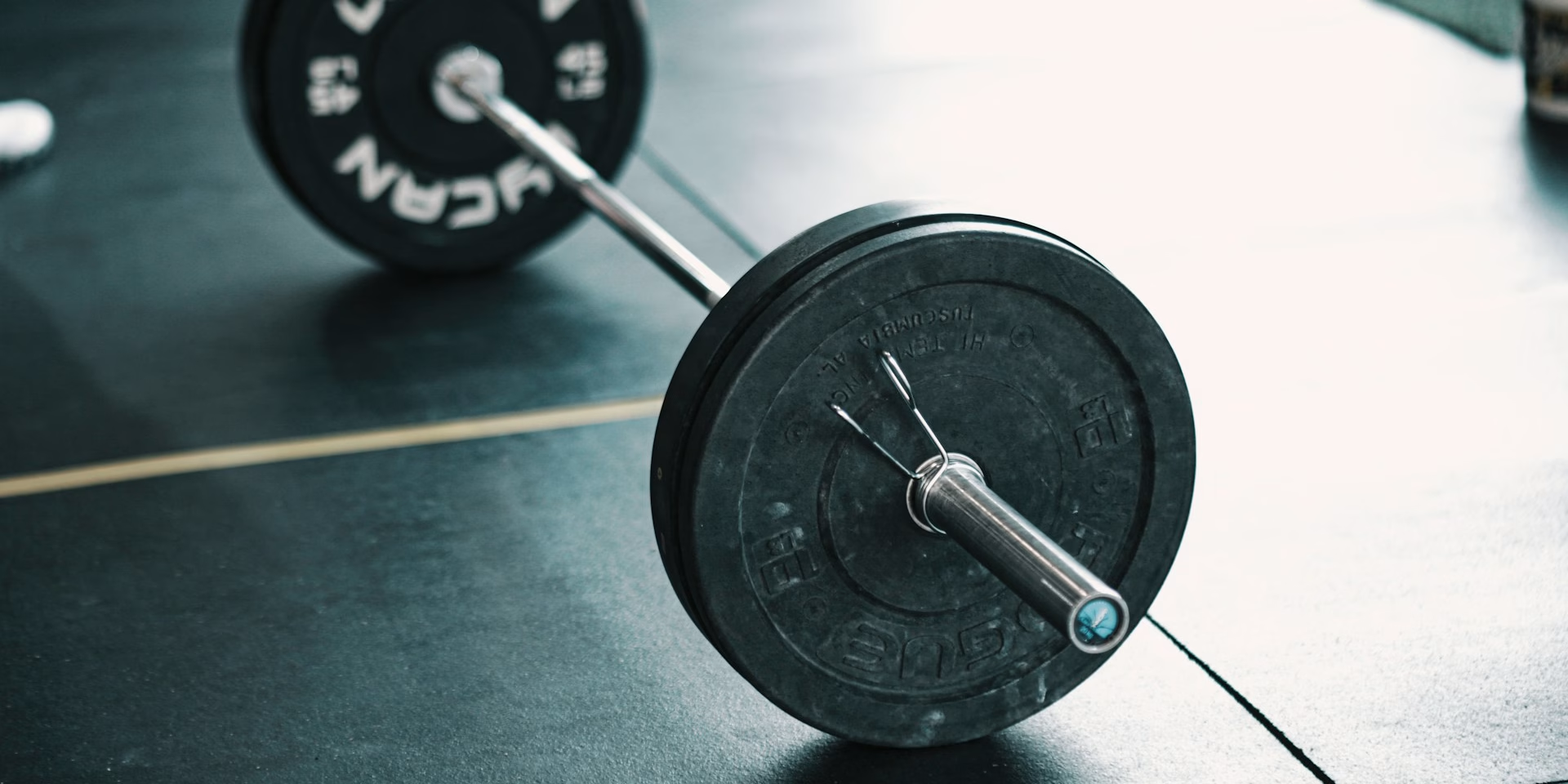The Effective Training Stimulus – Why the Right Load Determines Your Success
Effective training requires a targeted stimulus strong enough to trigger adaptations in the body. This so-called “effective training stimulus” forms the foundation for progress in strength, endurance, and speed training. But how do you find the right balance between too little and excessive load?
If your training is too easy, your progress stagnates. If you push your body too hard, you risk injuries and exhaustion. The key is to apply the optimal stimulus – specific, progressive, and individually tailored.
In this article, we dive deep into the science behind the effective training stimulus, analyze proven methods, and highlight common mistakes. By the end, you will know how to precisely control your training to achieve long-term and sustainable success.
Effective Training Stimulus: Definition, Mechanisms & Scientific Background
Definition and Concept
The principle of the effective training stimulus describes the necessity of a certain intensity to trigger physiological adaptations (Bompa & Haff, 2009). Without sufficient load, progress does not occur. When the stimulus is optimal, targeted adaptations in the nervous system, muscles, and metabolism lead to improved performance (Haff & Triplett, 2016). Overloading, however, carries risks such as overtraining, fatigue, and injuries (Kraemer & Ratamess, 2004).
The threshold law states that the body initiates adaptation processes only when the load exceeds an individual intensity threshold (Zatsiorsky & Kraemer, 2006). This threshold is variable and depends on factors such as genetics, current training status, and recovery ability (Dittmann, 2011). To achieve sustainable progress, it is essential to manage training loads strategically and adapt them to individual conditions.
Supercompensation – How Your Body Becomes Stronger Through Targeted Stimuli
Supercompensation is the process by which the body not only recovers after a stimulus but also adapts beyond the original level to better handle future loads (Bompa & Haff, 2009). This adaptation follows four phases:
- Load: Training causes microtrauma in muscles and tissues, temporarily reducing performance (Zatsiorsky & Kraemer, 2006).
- Recovery: The body repairs damage, replenishes energy stores, and regenerates structures (Haff & Triplett, 2016).
- Supercompensation: The body surpasses its original performance level to prepare for future loads (Kraemer & Ratamess, 2004).
- Return to Baseline: Without a new stimulus, performance gradually declines, necessitating continuous training adjustments (Dittmann, 2011).
The Stimulus Intensity Rule: Targeted Training Stimuli for Maximum Progress
To understand the effective training stimulus, the stimulus intensity rule is helpful. It categorizes training stimuli based on their effectiveness:
- Ineffective Stimulus: The load is too low – no physiological adaptations occur (Zatsiorsky & Kraemer, 2006).
- Minimally Effective Stimulus: Minor adaptations occur, but progress is slow (Bompa & Haff, 2009).
- Optimal Stimulus: The load is ideally dosed, leading to maximum adaptations without overload (Haff & Triplett, 2016).
- Excessive Stimulus: The load exceeds the recovery capacity. Over time, this can lead to overload, fatigue, or injuries (Kraemer & Ratamess, 2004).
Training stimuli should always exceed the minimally effective level to achieve an effect. The greatest performance improvements occur when you apply an optimal stimulus.
How the Body Responds to Training Stimuli – Muscle Growth, Hormones & Metabolism
When sufficient training stimuli are regularly applied, the body undergoes physiological adaptations. These adaptations occur on different levels, depending on the specific training stimulus.
Regular training improves neural processes. The communication between the nervous system and muscles becomes more efficient, enabling more precise and powerful movement execution (Zatsiorsky & Kraemer, 2006). Additionally, muscle growth (hypertrophy) begins. Training generates mechanical tension in the muscles and metabolic stress in the cells, triggering various biochemical processes that promote muscle growth (Bompa & Haff, 2009).
The body also undergoes hormonal changes. There is an increased release of testosterone, growth hormones, and IGF-1. These hormones enhance protein synthesis, which is crucial for effective muscular adaptation and performance improvement (Kraemer & Ratamess, 2004).
Simultaneously, energy metabolism is affected. Both aerobic and anaerobic capacities improve through training as enzyme activity increases and mitochondrial density in the cells rises.
All these adaptations do not happen by chance but follow the SAID principle (Specific Adaptation to Imposed Demands). This principle states that the body adapts specifically to the type of training stimulus applied (Dittmann, 2011).
Factors Determining the Effectiveness of a Training Stimulus
Several factors determine whether a given training stimulus is effective (Bompa & Haff, 2009).
Intensity refers to the strength of the load and determines how much the body is forced to adapt. The greater the intensity of the stimulus, the larger the potential adaptation (Zatsiorsky & Kraemer, 2006). Duration describes the length of the load phase and influences whether the body has enough time to respond to the applied stimulus (Haff & Triplett, 2016). Density refers to the ratio between load and rest, regulating recovery processes and the overall training load (Kraemer & Ratamess, 2004). Volume represents the total amount of stimuli applied within a single training session or over an extended period, influencing cumulative adaptation responses (Dittmann, 2011).
In addition to these fundamental parameters, individual factors also impact the effectiveness of a training stimulus. These include genetic predisposition, the trainee’s current fitness level, and their ability to recover (Bös, 2002). Each person responds differently to the same load, making individual training adjustments essential (Schäfer, 2007).
Training Adaptation by Age & Gender – What Really Matters
Training behavior and adaptability vary significantly with age and gender.
Children and adolescents exhibit a high level of adaptability due to their particularly plastic nervous system. They benefit from diverse training that allows them to gain a broad range of movement experiences. This optimally enhances their motor skills and coordination. However, early specialization in youth training can lead to long-term disadvantages (Faigenbaum & Myer, 2010).
In contrast, adults require more specific training stimuli. Their adaptability is limited due to their advanced training age. As experience increases, so does the threshold for making progress, making systematic load progression essential. Strength training and high-intensity interval training have proven particularly effective for this age group (Kraemer & Ratamess, 2004).
For seniors, the focus is primarily on maintaining functional performance. With increasing age, muscle mass, bone density, and coordination decline. Moderate, regular training with targeted strength and balance programs helps slow down age-related muscle loss and maintain independence in daily life (Liu & Latham, 2009).
Significant differences also exist between men and women in terms of hormone balance, which affects training adaptation. Testosterone promotes greater muscle growth and maximal strength development in men, while women, due to higher estrogen levels, tend to have better muscle fatigue resistance. Despite these differences, both genders benefit from targeted strength and endurance training, with individual factors such as hormonal fluctuations needing consideration in training plans (Hunter, 2014).
Effective Training Stimuli in Practice – How to Optimize Your Workout
Why You Must Continuously Increase Your Training Load – Methods of Progressive Overload
To make progress, you must constantly challenge your body. This means gradually increasing the training stimulus. There are several ways to achieve this. Increasing weight helps build strength by adding resistance, whether through heavier dumbbells or additional resistance in exercises. Increasing repetitions allows for progress when a certain weight becomes manageable before moving to a heavier load. Shortening rest periods reduces recovery time between sets, increasing overall load and improving endurance. Varying exercises introduces new muscle stimuli by regularly changing movements and workout structures.
Variety in Training
Repeating the same workout over time can lead to stagnation. The body adapts to specific loads, making it necessary to introduce new challenges. Changing exercises activates different muscles and prevents imbalances. Varying training methods, such as alternating between heavier weights with fewer repetitions and lighter weights with more repetitions, ensures continuous progress. Adjusting intensity by alternating between light and heavy training days balances recovery and improvement.
Common Mistakes That Sabotage Your Training Progress – How to Avoid Them
Effective training can be hindered by poor habits. Insufficient intensity results in a lack of progress, as the body requires a challenging stimulus to adapt. Overtraining by doing too much at once increases the risk of injuries and exhaustion. Inadequate recovery can prevent muscle growth, as adaptations occur during rest, not during training. Finding the right balance between load, variety, and recovery ensures long-term and sustainable results.
Utilizing the Effective Training Stimulus – Your Roadmap to Successful Training
To ensure your training remains effective, the load must be precisely dosed. If you do not challenge yourself enough, no progress will occur – your body will remain at the same level (Bompa & Haff, 2009). However, if you overdo it, you risk overloading, exhaustion, or even injuries (Kraemer & Ratamess, 2004).
The stimulus intensity rule helps in determining the right intensity. It states that a stimulus must be strong enough to trigger adaptations but not so high that it overwhelms recovery (Zatsiorsky & Kraemer, 2006). The goal should be to operate within this range – above the minimal threshold but below the overload limit (Haff & Triplett, 2016).
Not everyone responds equally to a training stimulus. Genetic factors, fitness level, and recovery capacity determine how well an individual adapts to a given load (Dittmann, 2011). Therefore, there is no universal formula – your plan should be tailored to your individual conditions.
Regular variation is key to making continuous progress. Repeating the same workout leads to stagnation as the body adapts to repeated loads. By changing intensities, incorporating different exercises, and varying methods, you keep the adaptation process active and continuously enhance your performance (Schäfer, 2007). Understanding these principles allows for precise training adjustments, ensuring that every applied stimulus leads to tangible improvements.
References
- Bompa, T.O. & Haff, G.G. (2009) Periodization: Theory and Methodology of Training. 5th ed. Champaign, IL: Human Kinetics.
- Dittmann, J. (2011) Trainingsprinzipien und Reizdosierung im Leistungssport. München: Verlag für Sportwissenschaft.
- Faigenbaum, A.D. & Myer, G.D. (2010) ‘Resistance Training for Children and Adolescents: Benefits, Safety, and Program Design Considerations’, Pediatrics, 121(4), pp. e1156–e1166.
- Haff, G.G. & Triplett, N.T. (2016) Essentials of Strength Training and Conditioning. 4th ed. Champaign, IL: Human Kinetics.
- Hunter, G.R. (2014) ‘Sex differences in resistance training’, Strength & Conditioning Journal, 36(2), pp. 34–43.
- Kraemer, W.J. & Ratamess, N.A. (2004) ‘Fundamentals of resistance training: progression and exercise prescription’, Medicine & Science in Sports & Exercise, 36(4), pp. 674–688.
- Liu, C.J. & Latham, N.K. (2009) ‘Progressive resistance strength training for improving physical function in older adults’, Cochrane Database of Systematic Reviews, (3), CD002759.
- Schäfer, R. (2007) Trainingslehre: Grundlagen und Anwendungen. 2nd ed. Berlin: Deutscher Sportverlag.
- Zatsiorsky, V.M. & Kraemer, W.J. (2006) Science and Practice of Strength Training. 2nd ed. Champaign, IL: Human Kinetics.




